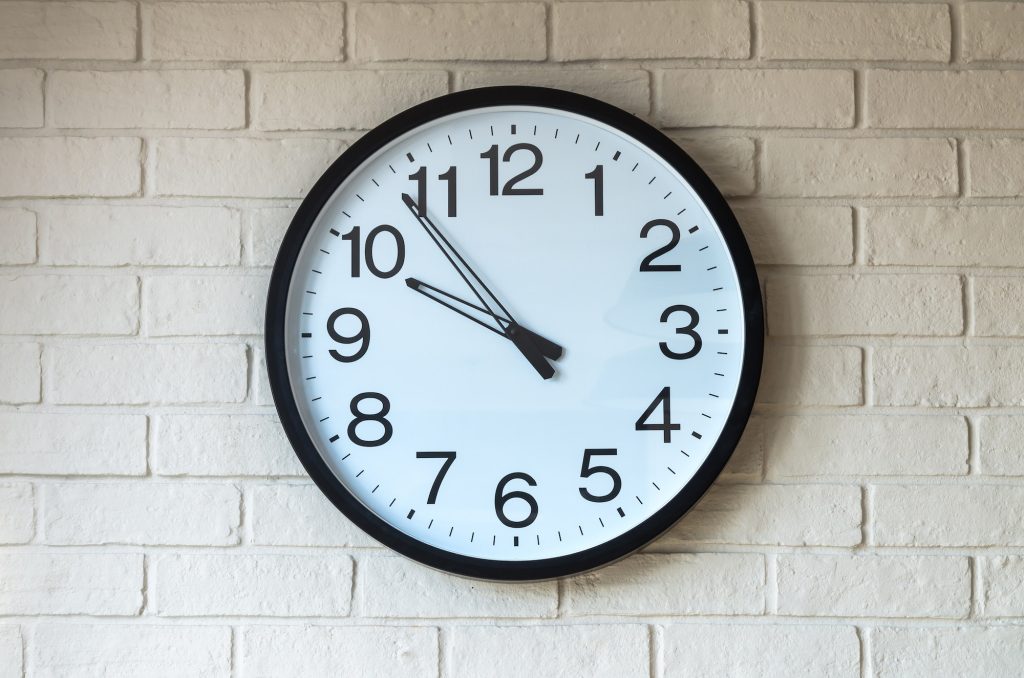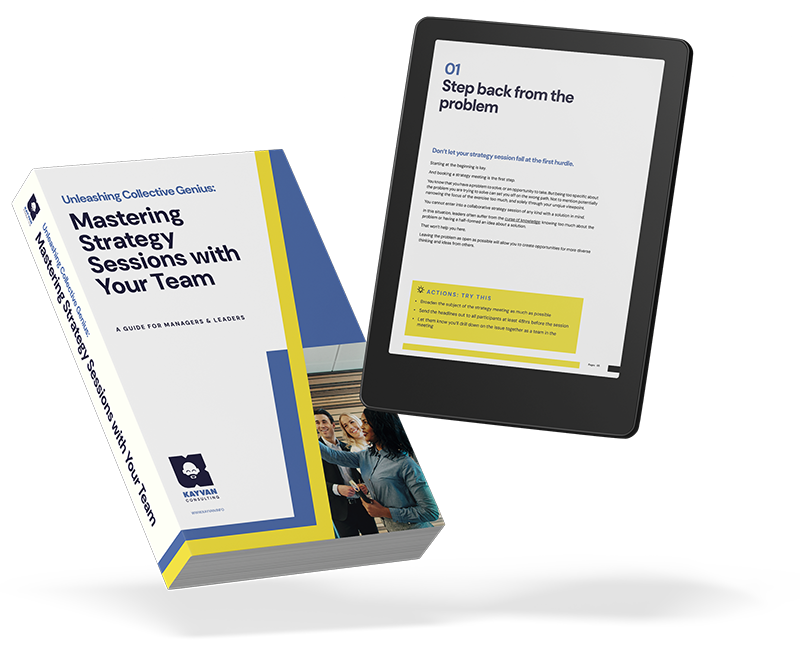Bad meetings drag everyone down.
They can be useful and productive when conducted well. Most of the time, that’s the intention. Unfortunately, too often they can be unproductive and wasteful.
The uncomfortable truth is that many of us don’t even realize our meetings are bad.
From long and meandering agendas, to a lack of clear goals and objectives, there are multiple ways that meetings can go off the rails. By being aware of these common pitfalls and being able to identify the signs of a bad meeting, you can take steps to ensure that your meetings are productive, efficient, and effective.
Here are 10 signs of a bad meeting, along with some tips on how to make meetings less terribble
1) People arrive late and unprepared.
We all know that when attending a meeting, it’s important to be prepared and on time.
If not for the sake of ensuring the meeting is productive, then at least out of courtesy for the other participants. But when people are late or arrive without having done the necessary prep, it can be difficult for the meeting to progress. Not to mention awkward.
This isn’t always down to the ill-prepared latecomers though.
- Some meetings are booked at short notice, or don’t take into consideration the time needed for those involved to prep or even get to the meeting in good time.
- Bad communication on the time and place of the meeting can be a factor too.
- As can not giving all participants sufficient context for the meeting ahead of time or distributing reading materials.
Getting started on time, with everyone ready to dive in is a bare minimum for having a successful meeting.
2) No clear agenda or objectives are set.
How many times have you attended a bad meeting, with only a vague idea of why you’re there?
Having no agenda or objectives set can make the meeting itself pointless, frustrating for participants and ultimately not produce any useful outcomes. An agenda is simply a listing of items to be discussed during the meeting, so there’s no real excuse for calling a meeting without producing one first. It can be used to ensure that everyone is on the same page for what will be discussed and accomplished, and it can also serve as a reference point for making decisions during the meeting.
Objectives on the other hand, are specific outcomes that need to be achieved as a result of meeting.
With just an agenda, points can be discussed. But without clear objectives, those agenda points can end up unresolved. The objectives give a direction to the conversation and help to ensure that the agenda points are addressed and that progress is made.
Having a clear agenda and objectives will help keep everyone on track and ensure that everyone is focused on the task at hand.
You may even be able to shorten your meetings as a result.

3) Bad meetings run over their allocated time.
A telltale sign of an bad meeting is running over the allocated time.
Often this means that not all the points on the agenda get covered or resolved. This results in decisions not being made, along with my favorite sign of an bad meeting… Needing to book another meeting.
What’s more, different agenda points are important to different people.
If your work is being blocked by one of the items on the agenda, it can be crucial for you to get a decision made by all concerned parties in that meeting. But if that agenda point is near the end of the list, it can be given a smaller, disproportionate amount of time for discussion. Or missed entirely.
To prevent meetings from running over their allocated time (or ending without covering all agenda points) it’s important to set and enforce a set of ground rules for the meeting before it begins.
These rules should include guidelines for:
- How long each topic should be discussed
- Who should be leading each agenda point
- Who should be talking at any one time, and for how long
- How to flag when someone is going off-topic
- What decision or outcome is needed for each agenda point
- How quickly the meeting should move through its agenda
In a group setting, it can be difficult to enforce this. One solution is to assign responsibility to someone in the meeting whose job it is to keep the discussion on track, to help to ensure that the meeting doesn’t overrun its allocated time.
In many cases a neutral facilitator can help with this. Someone who isn’t necessarily part of the discussion, but that can assume the responsibility of guiding the team through the agenda.
4) People become disengaged or are not actively participating.
We’ve all had to sit through a meeting that doesn’t feel relevant to us.
There can be many reasons for this:
- The topic may not be interesting
- The topic may not be relevant
- The discussion material may be too complex
- People may be intimidated by the group dynamics or the most senior people dominating conversation
- The meeting is too long
- The conversation has gone off-topic
It is important to create an environment that encourages open dialogue and participation, such as making the topic interesting and accessible, promoting interactive activities, and fostering a non-judgmental atmosphere.
Additionally, it can be helpful to begin the discussion with simpler topics and have a leader who can encourage people to participate and provide support.

5) Details of the discussion are not recorded
In order to ensure that everyone is on the same page and that progress is made, it’s important to document both the conversations that are being had, along with the decisions that are made in the meeting.
Often one person takes minutes for the entire meeting. Sometimes all participants take their own notes.
But both of these routes are are signs of a bad meeting, they are inefficient and can cause problems.
With a single person taking notes, issues that can arise are:
- Overwhelm: The note-taker may struggle to keep up with the pace of the discussion and may end up missing or being unable to capture vital details.
- Bias: The note-taker’s personal perspective and interpretation of the discussion may influence what they choose to include in the notes. They may put more or less weight behind any one comment or point raised.
- Inaccuracy: The note-taker may make mistakes when transcribing what was said, which can lead to inaccuracies in the notes.
- Limited engagement: The note-taker may be so focused on taking notes that they are not fully present and engaged in the discussion, thus restricting their ability to actively participate in the meeting.
The other route of having everyone take their own notes is also problematic and can result in:
- Incomplete or biased notes: Different people may focus on different aspects of the discussion and may not capture all the important points. This can lead to incomplete or biased notes.
- Inefficient use of time: If everyone is taking their own notes, it can be time-consuming and distract them from actively participating in the discussion.
- Confusion and inconsistencies: Each person’s notes may be organized differently, which can make it difficult to compare and reconcile them later. There may also be discrepancies between different sets of notes, which can lead to confusion and misunderstandings.
- Difficulty in sharing and collaborating: If everyone is taking their own notes, it can be challenging to share with other team members. There’s no single set of notes that everyone can refer to or use as the definitive source, so collaboration is difficult.
The most efficient route for recording the details of a meeting is to standardise and visualise the conversations being had.
A competent workshop facilitator can help with this, by framing a question or problem to be solved at each phase of the meeting. Individual responses, ideas or solutions being put forward by all participants can then be logged in a standardised format against this.
Going one step further, simple voting patterns can be used to select the best route forward from all of the suggestions, again overseen by the facilitator.
6) Conversations go on unproductive tangents
Conversations can often go off on a tangent in meetings for a variety of reasons.
One reason is that people may become sidetracked by an interesting or controversial topic that is only tangentially related to the main discussion. This can be especially likely to happen if the meeting lacks a clear agenda or structure.
Tangents contribute to bad meetings for a few reasons.
- They can be time-consuming, taking away from the time that could be used to address more important issues.
- They can be confusing, making it difficult for team members to follow the discussion and stay on track.
- Tangents can be frustrating, especially for team members who are trying to stay focused on the main topic.
Use your agenda to help you keep the conversation on track. This way, tangents can be avoided (to a degree) and you can remind participants that all the important topics need to be addressed.
A major bonus here would be to use a designated facilitator or moderator. Someone independent of the decision making process can help steer the conversation back on track if it starts to veer off course.
Finally, it can be helpful to set some form of ground rules for the meeting, such as encouraging the participants to stay focused, keep on topic and avoid going off on tangents.
7) Confusing cross-talk
Cross-talk, or multiple people speaking at the same time, can be a common issue in bad meetings and can be confusing and frustrating for team members.
Often is comes from an honest place; people are passionate about their ideas.
Similarly it can be borne out of frustration or disagreement, or when people are trying to interrupt or talk over each other.
Cross-talk can be bad for a number of reasons:
- It can make it difficult for team members to understand what is being said and to follow the discussion.
- This can have a particularly negative impact on meeting participants who are hard of hearing, or are listening and speaking in something other that their first language.
- It can be disrespectful and disrupt the flow of the conversation.
- Finally, it can be frustrating for team members and can create tension within the team.
- To avoid confusing cross-talk in meetings, it can be helpful to establish ground rules that encourage respectful communication and discourage interrupting or talking over others.
It can also be helpful to have a designated facilitator or moderator who can manage the flow of the conversation and ensure that everyone has an opportunity to speak.
Additionally, it can be helpful to encourage team members to listen actively and to use turn-taking strategies, such as raising a hand or using a speaking stick, to ensure that everyone has a chance to speak.
But one commonly overlooked issue is that the very principle of everyone taking it in turns to speak or debating in a linear fashion may in fact be the root of the problem itself. A real world example:
- I recently facilitated a 90 minute retrospective for a non-profit
- The retrospective had seven participants
- If each participant had spent 2 minutes putting forward an idea
- And each remaining participant had spent 2 minute feeding back on that idea
- The 90 minutes would have allowed only 6 ideas to have been put forward
In scenarios like this, using other techniques such as Working Together, Alone can enable the team to be incredibly more productive than speaking in a linear, debate style.

8) The same people dominate the conversation & quiet voices are lost
We’re all familiar with the same people dominating the conversation in meetings.
But having the same characters taking up a disproportionate amount of airtime frequently leads to the the quiet voices being lost too.
This can happen for a variety of reasons, such as:
- More extroverted individuals feeling more comfortable speaking up
- Those in leadership roles feeling the need to assert their authority
- Quieter or more junior participants not feeling they have a chance to speak or the authority to put their thoughts forward
This dynamic can be detrimental to the group as a whole, as it can prevent valuable ideas and perspectives from being heard and considered. The more vocal or senior participants aren’t necessarily aware of the impact of their actions, or of the viewpoints and suggestions the group are missing out on.
I found out first hand that sometimes the quietest person in the room can have the best idea, but not be comfortable in putting it forward.
To counter these issues action needs to be taken, both in the way the meeting is structured and the way it is conducted:
- Breaking the meeting into smaller discussion groups can allow for a more even distribution of participation
- Giving time limits to each person speaking as part of a set of ground rules can help
- Implementing a “no interruption” policy to give quieter voices the space to fully express their thoughts without being interrupted.
- Having a neutral facilitator guide the group, managing the conversation and employing different exercises to ensure a more democratic approach is taked.
It is important to approach this issue with an open and inclusive mindset.
Diversity of thought and perspective is essential for effective decision making and problem solving.
By making an effort to actively listen to and include all voices in the conversation evenly, the group can benefit from a wider range of ideas, approaches, perspective and solutions.
9) Bad meetings end without clear decisions or conclusions
One issue often faced during bad meetings is that of not having a clear outcome.
With the momentum and energy of a meeting, it can be easy for topics to be discussed without any clear decisions or conclusions being drawn about the topic. This can lead to confusion and frustration amongst meeting participants as well as members feeling their time has been wasted.
Worst of all, the meeting concludes with an all too common action:
Booking another meeting.
To avoid this issue, the aforementioned agenda can help. Outlining the topics to be discussed gives structure, but most importantly can dictate decisions that need to be made.
This allows the person acting as the meeting facilitator to structure the conversation and make sure that topics are discussed in an effective and organized manner.
We have a rule in meetings I facilitate:
There’s always a decision.
10) There is no follow up or action planning
Even the best run meetings can fall flat in terms of productivity and generating results if true action isn’t taken.
Sometimes the energy of making big decisions and putting exciting new strategies together can overwhelm the entire group. Everyone leaves on a high, happy with the progress that was made. But nobody determined next steps, meaning a follow up is needed to actually determine who does what in order to bring things to life.
This can turn a good meeting into a bad meeting right at the final hurdle.
Before concluding a successful meeting, it can be helpful to have a brief review of the main topics that were discussed and the decisions that were made.
For each one, add details of what action items will be initiated in response to those decisions. Include details of who is responsible, along with timelines.




